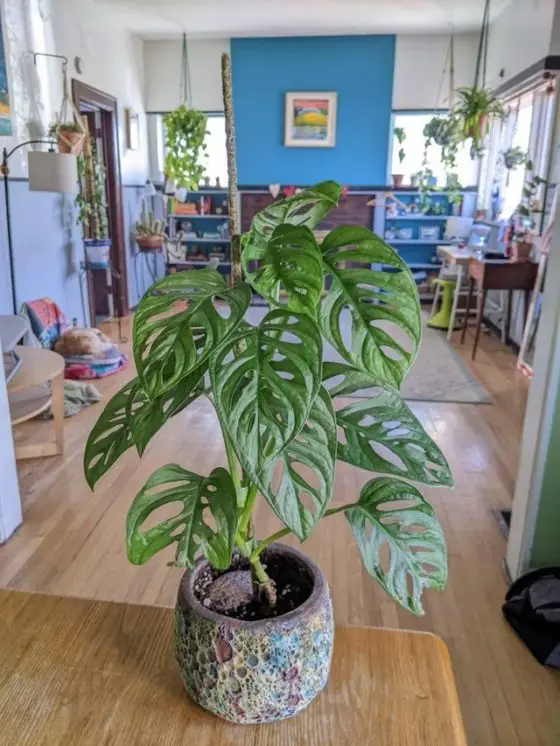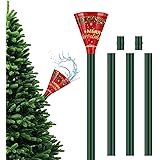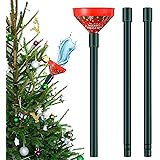Can monstera live in low light? The answer is yes, but with some care and attention. Many plants thrive in bright, indirect sunlight, but what about those dark corners of your home that could use a touch of greenery? If you’re a fan of monstera plants but worried about their light requirements, fear not! This article will guide you through the ins and outs of keeping a monstera happy in low light conditions.
From understanding their natural habitat to providing the right amount of moisture, we’ll reveal the secrets to cultivating a thriving monstera, even in the darkest nooks of your space. So, if you’ve been wondering, “Can monstera live in low light?” – read on to find out how to create the perfect environment for these stunning plants to flourish.
Can Monstera Live in Low Light?
Monstera plants, with their beautiful large leaves and iconic Swiss cheese-like holes, have become quite popular in recent years. They are often sought after for their unique aesthetic and ability to add a touch of tropical vibes to any indoor space.
But one question that often comes up is whether monstera plants can survive and thrive in low light conditions. In this article, we’ll explore the characteristics of monstera plants and their relationship with light, as well as provide some tips on how to care for them in low light environments.
The Importance of Light for Monstera Plants
Like all plants, monstera plants require light to carry out photosynthesis, the process by which they convert sunlight into energy. Light is essential for their growth and overall health. Without adequate light, plants may struggle to produce enough energy to support their metabolic processes and may exhibit signs of stress or decline.
Monstera plants are native to tropical rainforests, where they grow as understory plants, meaning they thrive in the lower levels of the forest floor with limited direct sunlight. This natural habitat gives us some insight into their ability to tolerate lower light conditions compared to plants that require full sun exposure.
Read More: About When Is It Too Late To Transplant Zucchini?
Understanding Low Light Environments
Before we delve into whether monstera plants can survive in low light conditions, let’s clarify what we mean by “low light” in the context of indoor plants. In indoor settings, low light usually refers to areas that receive minimal direct sunlight, such as:
- Rooms with small windows
- Spaces far from windows
- Rooms with northern or eastern exposures
These conditions typically provide lower levels of natural light compared to areas with large, south-facing windows or direct exposure to unobstructed sunlight.
Adapting Monstera Plants to Low Light
While monstera plants prefer bright, indirect light, they can adapt and survive in low light conditions if certain precautions are taken. Here are some tips to help your monstera thrive in a low light environment:
1. Find the Right Spot
Place your monstera plant in the brightest spot available within the low light area. This could be near a north-facing window or close to an east-facing window. Avoid placing your monstera in a completely dark corner of the room, as it will struggle to receive the minimal light it needs to survive.
2. Supplement with Artificial Lighting
If natural light is limited in your space, you can supplement it with artificial lighting. LED grow lights or fluorescent lights can provide the necessary light energy for your monstera plant.
Position the lights above the plant, mimicking the natural angle of sunlight, and ensure they are on for 12 to 14 hours a day to compensate for the lack of natural sunlight.
3. Rotate the Plant
Rotate your monstera plant regularly to ensure all sides receive an equal amount of light. This will prevent the plant from leaning or growing lopsided as it reaches towards the available light source.
Signs of Low Light Stress in Monstera Plants
Even with the best care, monstera plants may exhibit signs of stress or struggle in low light conditions. It’s important to pay attention to these signs and adjust their care accordingly. Here are some common symptoms of low light stress:
- Slow or stunted growth
- Smaller leaves
- Pale or yellowing foliage
- Leggy or elongated stems
- Leaning towards the light source
If you notice any of these symptoms, it might be an indication that your monstera plant is not receiving enough light and needs a change in its environment or care routine.
Providing Proper Care in Low Light
Aside from light, monstera plants have a few other care requirements that should be considered, especially when placed in low light conditions. Here are some additional tips to help your monstera thrive:
1. Moderate Watering
Monstera plants prefer slightly moist soil but can suffer from root rot if overwatered. Check the soil moisture regularly and water only when the top inch of the soil feels dry. Adjust the watering frequency based on the specific conditions of your environment, as low light may affect the drying rate of the soil.
2. Proper Drainage
Ensure your monstera plant is in a well-draining pot with drainage holes at the bottom. This allows excess water to escape, preventing waterlogging and root rot. Avoid letting your monstera sit in standing water, as this can lead to root suffocation and other issues.
3. Adequate Humidity
Monstera plants appreciate higher humidity levels, similar to their natural rainforest habitat. While low light environments are often drier, you can increase humidity around your monstera by misting its leaves with water, placing a tray of water nearby, or using a room humidifier.
4. Regular Cleaning
Keep your monstera’s leaves clean and free from dust by gently wiping them with a damp cloth. Dust can block sunlight absorption and hinder photosynthesis, affecting the overall health of the plant.
While monstera plants may not thrive in extremely low light conditions, they can adapt and survive in moderate levels of indirect light. By finding the brightest spot available, supplementing with artificial lighting if necessary, and providing proper care, you can enjoy the beauty of a monstera plant in your low light indoor spaces.
Pay attention to any signs of stress and adjust their care accordingly. Remember, each monstera plant is unique, so it’s essential to observe and respond to their individual needs. With the right conditions and care, you can create a thriving environment for your monstera and enjoy its lush foliage for years to come.
Read More: About How To Know If Eggplant Flower Is Pollinated?
Frequently Asked Questions (FAQs)
Monstera plants are generally known for their ability to thrive in medium to bright indirect light. While they can tolerate lower light conditions, it may affect their growth and overall health. Here are some frequently asked questions about Monstera plants in low light:
It is possible to keep your Monstera in a room with limited natural light, but it may not thrive as well as it would in a brighter location. Consider supplementing the light with artificial sources like grow lights to provide adequate illumination for the plant.
While Monstera plants can adapt to low light conditions, they still require some level of brightness. Aim to provide at least 6-8 hours of indirect or filtered light per day to ensure the plant’s survival in low light.
If your Monstera is not getting enough light, it may exhibit signs such as stunted growth, smaller leaves, pale or yellowing foliage, and leggy stems reaching towards the light source.
While Monstera plants can tolerate artificial lighting, they still require a certain level of natural light to thrive. If you must keep your Monstera in a windowless room, consider providing it with a combination of natural and artificial light sources to mimic the conditions it would experience outdoors.
Some Monstera varieties, such as Monstera adansonii, are known to be more adaptable to lower light conditions compared to others. If you have limited light in your space, opting for these varieties may increase your chances of success.
To increase the light levels for your Monstera in a low light environment, you can place it closer to a window, use reflective surfaces to bounce light onto the plant, rotate the plant frequently to ensure even light exposure, or consider using artificial grow lights to supplement the available light.
To ensure your Monstera receives even light exposure in low light conditions, it is recommended to rotate the plant once every 1-2 weeks. This will prevent the plant from leaning or growing towards a specific light source.
While Monstera plants can survive under artificial grow lights, it is still beneficial to provide them with some natural light. If your space lacks natural light, supplementing with high-quality grow lights can help your Monstera thrive in a low light environment.
Final Thoughts
Monstera plants are known for their lush and vibrant foliage, but can they thrive in low light conditions? While Monstera plants prefer bright, indirect sunlight, they can tolerate lower light levels. However, it’s important to keep in mind that their growth may be slower, and they might not produce as many leaves.
To ensure the best chance of survival in low light, place your Monstera near a window with filtered light or provide artificial light sources, such as grow lights. Regularly assess the plant’s health and adjust its lighting conditions accordingly. So, can Monstera live in low light? Yes, but with proper care and attention.
Auto Amazon Links: No products found.
Perfect Plants Christmas Tree Saver 8oz. | Easy Use Xmas Tree Preserver Food | Have Healthy Green Christmas Trees All Holiday Season
$9.97 (as of December 3, 2025 00:36 GMT +00:00 - More info- Product prices and availability are accurate as of the date/time indicated and are subject to change. Any price and availability information displayed on [relevant Amazon Site(s), as applicable] at the time of purchase will apply to the purchase of this product.
Kaiedos Christmas Tree Watering Funnel - 39 Inch Funnel, Reusable Design, Makes Watering Your Live Tree a Snap!
$14.99 (as of December 3, 2025 00:36 GMT +00:00 - More info- Product prices and availability are accurate as of the date/time indicated and are subject to change. Any price and availability information displayed on [relevant Amazon Site(s), as applicable] at the time of purchase will apply to the purchase of this product.
Christmas Tree Watering Funnel, Real Christmas Tree Water Long Funnel About 40 Inch, Trees Watering System for Water Indoor Outdoor
$15.99 (as of December 3, 2025 00:36 GMT +00:00 - More info- Product prices and availability are accurate as of the date/time indicated and are subject to change. Any price and availability information displayed on [relevant Amazon Site(s), as applicable] at the time of purchase will apply to the purchase of this product.
IPOOLTENG Christmas Tree Watering Funnel 3 Tube 1 Funnels 40 Inch - 3 Section Plastic Christmas Tree Funnel Waterer, Long Funnels for Watering Trees, Best Gifts for Your Parents to Water Tree
$15.53 (as of December 3, 2025 00:36 GMT +00:00 - More info- Product prices and availability are accurate as of the date/time indicated and are subject to change. Any price and availability information displayed on [relevant Amazon Site(s), as applicable] at the time of purchase will apply to the purchase of this product.
1 Pack Christmas Tree Watering Funnel System, 44 Inch Christmas Tree Watering Stick with Adjustable 3-Section Design, Reusable & Spill-Free, Xmas Plant Waterer Tool for Indoor and Outdoor
$16.99 (as of December 3, 2025 00:36 GMT +00:00 - More info- Product prices and availability are accurate as of the date/time indicated and are subject to change. Any price and availability information displayed on [relevant Amazon Site(s), as applicable] at the time of purchase will apply to the purchase of this product.
Cuisinart 6.5" Cast Iron Smashed Burger Press, Round Flat Edge Grill Press for Crispy Smash Burgers, Burger Tool for Grill and Griddle Accessories, for BBQs and Tailgates
$24.99 (as of December 3, 2025 16:48 GMT +00:00 - More info- Product prices and availability are accurate as of the date/time indicated and are subject to change. Any price and availability information displayed on [relevant Amazon Site(s), as applicable] at the time of purchase will apply to the purchase of this product.
Muddy Mat® Shown on TV Super Absorbent Microfiber Dog Door Mat for Muddy Paws, Non-Slip Washable Pet Rug, Quick Dry Chenille Entryway Carpet, Machine Washable Indoor Outdoor mat, Grey 30"x19"
$19.95 (as of December 3, 2025 16:48 GMT +00:00 - More info- Product prices and availability are accurate as of the date/time indicated and are subject to change. Any price and availability information displayed on [relevant Amazon Site(s), as applicable] at the time of purchase will apply to the purchase of this product.
Snow Joe Premium Enviro Blend Ice Melt, Green-Coated Deicer Crystals, 50 lb - Safer Melter for Vegetation, Concrete & Metals w/ Anti-Corrosion Calcium Magnesium Acetate
$32.97 (as of December 3, 2025 16:48 GMT +00:00 - More info- Product prices and availability are accurate as of the date/time indicated and are subject to change. Any price and availability information displayed on [relevant Amazon Site(s), as applicable] at the time of purchase will apply to the purchase of this product.
OLANLY Dog Door Mat for Muddy Paws 30x20, Absorbs Moisture and Dirt, Absorbent Non-Slip Washable Doormat, Quick Dry Chenille Mud Mat for Dogs, Entry Indoor Entryway Carpet for Inside Floor, Grey
$9.99 (as of December 3, 2025 16:48 GMT +00:00 - More info- Product prices and availability are accurate as of the date/time indicated and are subject to change. Any price and availability information displayed on [relevant Amazon Site(s), as applicable] at the time of purchase will apply to the purchase of this product.
Zevo Flying Insect Trap Official Refill Cartridges - Fits Both Zevo Trap & MAX Indoor Fly Trap - Authentic Trap+Lock Technology to Catch Gnats, House & Fruit Flys (4 Official Refill Cartridges)
$14.97 (as of December 3, 2025 16:48 GMT +00:00 - More info- Product prices and availability are accurate as of the date/time indicated and are subject to change. Any price and availability information displayed on [relevant Amazon Site(s), as applicable] at the time of purchase will apply to the purchase of this product.











